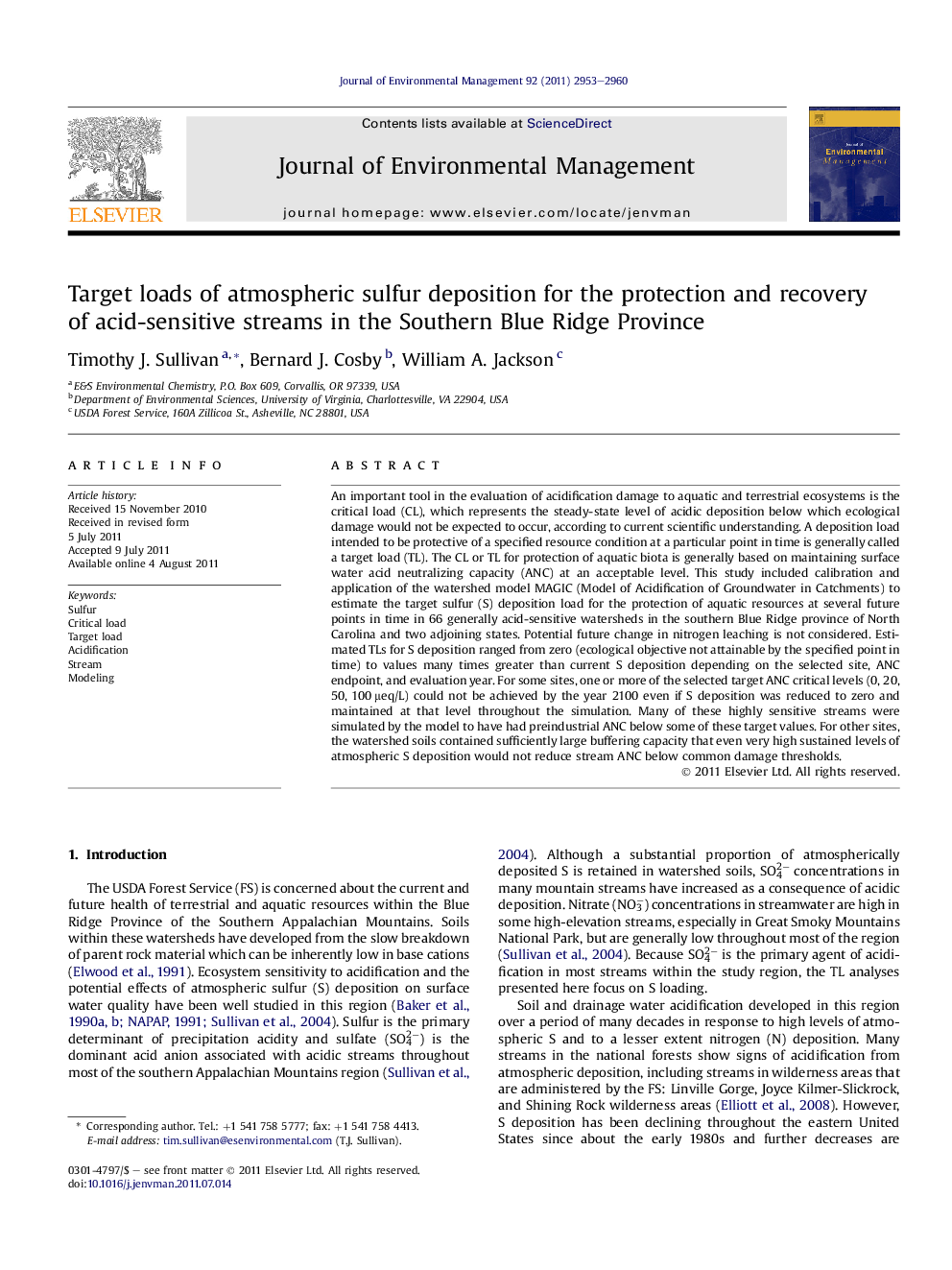| Article ID | Journal | Published Year | Pages | File Type |
|---|---|---|---|---|
| 1057229 | Journal of Environmental Management | 2011 | 8 Pages |
An important tool in the evaluation of acidification damage to aquatic and terrestrial ecosystems is the critical load (CL), which represents the steady-state level of acidic deposition below which ecological damage would not be expected to occur, according to current scientific understanding. A deposition load intended to be protective of a specified resource condition at a particular point in time is generally called a target load (TL). The CL or TL for protection of aquatic biota is generally based on maintaining surface water acid neutralizing capacity (ANC) at an acceptable level. This study included calibration and application of the watershed model MAGIC (Model of Acidification of Groundwater in Catchments) to estimate the target sulfur (S) deposition load for the protection of aquatic resources at several future points in time in 66 generally acid-sensitive watersheds in the southern Blue Ridge province of North Carolina and two adjoining states. Potential future change in nitrogen leaching is not considered. Estimated TLs for S deposition ranged from zero (ecological objective not attainable by the specified point in time) to values many times greater than current S deposition depending on the selected site, ANC endpoint, and evaluation year. For some sites, one or more of the selected target ANC critical levels (0, 20, 50, 100 μeq/L) could not be achieved by the year 2100 even if S deposition was reduced to zero and maintained at that level throughout the simulation. Many of these highly sensitive streams were simulated by the model to have had preindustrial ANC below some of these target values. For other sites, the watershed soils contained sufficiently large buffering capacity that even very high sustained levels of atmospheric S deposition would not reduce stream ANC below common damage thresholds.
► We model 66 streams in the Southern Blue Ridge province, USA using the MAGIC model. ► We model target loads of atmospheric S deposition for protecting sensitive streams. ► Estimated TL varied greatly depending on site, recovery target, and timeframe. ► For some streams, ANC targets could not be achieved even with no S deposition. ► Streams with lowest preindustrial ANC and highest SO42− concentration had lowest TL.
